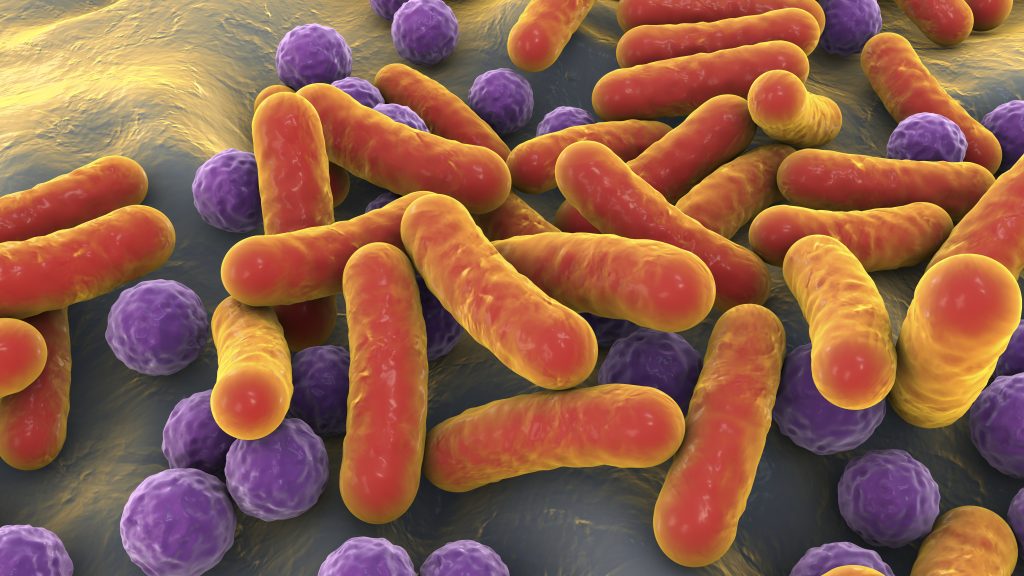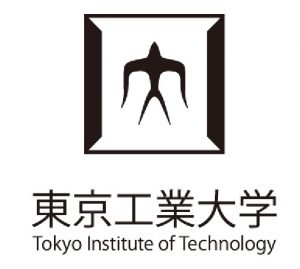Dr Alexis Gilbert – Tracing the History of Naturally Occurring Molecules
Understanding the history of molecules is invaluable in numerous applications, such as food authentication and identifying the source of natural gas. Based at the Tokyo Institute of Technology in Japan, Dr Alexis Gilbert and his team are developing analytical tools that can be used to reveal the origin and history of molecules. Their work has already been applied to several areas, including the detection of fake alcohol and environmental research.
Importance of Molecular History
The tools needed to deduce the history of molecules are in high demand. For instance, in the food industry, these techniques could allow authorities to better protect consumers from fake and potentially harmful products. Such tools would also help environmental scientists to gain deeper insight into the ‘carbon cycle’, allowing them to build a more accurate picture of how carbon is converted from one molecular form into another. A greater understanding of the carbon cycle would help policy-makers to more effectively mitigate climate change.
Dr Alexis Gilbert and his team from the Tokyo Institute of Technology in Japan are developing innovative analytical techniques that can deduce the origin and history of molecules, by focusing on clues within a molecule’s carbon atoms.
Identifying Isotopes
The background to Dr Gilbert’s research begins with carbon’s atomic nucleus. The nucleus of a carbon atom always contains six protons, but the number of neutrons present can vary. Scientists classify carbon atoms according to the number of neutrons present in the nucleus, as different ‘isotopes’. The most prevalent carbon isotope is 12C, which contains six neutrons, alongside six protons.
Another isotope of interest is 14C, also known as ‘carbon-14’, whose nucleus contains eight neutrons. As the nucleus of 14C is unstable, one of its eight neutrons can turn into a proton, transforming the atom into a nitrogen isotope. Since half of the atoms in a sample of 14C will decay over a known period of time, the age of the sample can be determined by measuring the relative abundance of this isotope.
Dr Gilbert is particularly interested in a third isotope of carbon, 13C, which contains seven neutrons alongside six protons. ‘Unlike 14C, which decays with time, 13C is a stable isotope, so its abundance does not decrease with time, but is dependent on the origin of a molecule,’ he explains.
Dr Gilbert and his colleagues focus on small carbon-containing molecules, such as methane, which contains one carbon atom bonded to four hydrogen atoms. In a typical sample of methane, most of the molecules will contain the 12C isotope of carbon, while a few others will be composed of the heavier 13C isotope. The number of possibilities increases as the number of carbon atoms per molecule increases. For instance, a molecule made up of three carbon atoms could be composed of two 12C isotopes and one 13C isotope; one 12C and two 13C isotopes; three 12C isotopes; or even three 13C isotopes.
Dr Gilbert specialises in the detection and quantification of these possible forms of carbon-containing molecules. ‘We measure the relative abundance of these isotopes at specific positions within molecules,’ he says. ‘Such “isotope ratios” reveal details about the mechanisms and conditions of a molecule’s origin. I see it as the DNA or fingerprint of the molecule.’
In collaboration with colleagues from the University of Nantes and Tokyo Institute of Technology, Dr Gilbert’s team uses advanced analytical instruments to measure 12C/13C isotope ratios in a range of different molecules for various applications.

Authentication of Alcoholic Beverages
Ethanol, the type of alcohol found in all alcoholic beverages, contains two carbon atoms. It can be prepared synthetically in the laboratory or can form naturally through the fermentation of plant sugars – from fruit or grain, for example. In these two methods, both the starting materials and the path taken to produce ethanol are different. Consequently, Dr Gilbert and his colleagues knew that the ratio of carbon isotopes in a sample of ethanol produced naturally was very likely to be different from that of synthetic ethanol.
Dr Gilbert and his colleagues at the University of Nantes analysed commercial alcoholic beverages, including beer, Tequila and wine. Not only did the team show that their method was able to determine whether a sample of alcohol was authentic, but interestingly, they were even able to identify the plant that the alcohol was ultimately derived from. As the sugar used to produce authentic Tequila is exclusively derived from the blue agave plant, this method could be useful in the detection of fake Tequila fermented from cheap sugars.
After joining the Tokyo Institute of Technology, Dr Gilbert then developed a method for analysing ethanol that required a much smaller amount of sample. His method uses an instrument that first breaks up the molecules into smaller pieces, known as ‘fragments’. The fragments are then fired towards a detector, and each one collides with the detector at a different time. The collision patterns are then displayed as a graph, which Dr Gilbert can then use to deduce the locations of the 12C and 13C isotopes within molecules.
Dr Gilbert’s team could successfully measure the carbon isotope ratios of 14 untreated ethanol-containing samples, including beer, Tequila, wine, Cointreau liquor and Japanese shochu. Their method was far more straightforward than other methods, which usually require the distillation of ethanol samples before analysis. Because of its simplicity and sensitivity, this method paved the way to environmental applications.

The Origin of Natural Gas
Natural gas is a fossil fuel, but emissions of greenhouse gases and other pollutants from its combustion are much lower than those from oil and coal, making it a more environmentally friendly choice. There are different processes that can produce natural gas.
‘Thermogenic’ natural gases, commonly found deep underground, are formed from the thermal breakdown of organic matter. ‘Biogenic’ natural gases, which are found closer to the Earth’s surface, are produced from other carbon-containing molecules with the assistance of microbes.
How industries decide whether to extract natural gas from a potential site and how they manage the extraction depends in part on the origin of the gas. ‘Researchers have long used stable isotopes of carbon and hydrogen to decipher the origin and fate of natural gas – methane in particular,’ says Dr Gilbert. Unfortunately, the situation is complicated by the fact that both forms of natural gas are known to co-exist in some regions. Over time, thermogenic gases seep through the rock and mix with biogenic gases. Because the underground cycling of these compounds is very complex, new and improved methods for measuring their isotope ratios are needed.
Therefore, Dr Gilbert’s team applied their experience from their ethanol studies to develop a similar procedure that could accurately establish the origin of a natural gas. ‘Measuring isotope ratios in natural gas can also give clues on what sort of biology is living underground,’ adds Dr Gilbert.
Natural gas is a mixture of carbon-containing molecules, called hydrocarbons, including methane and propane. When developing their technique, Dr Gilbert’s team decided to focus on propane – a molecule that contains three carbon atoms. Like most naturally occurring carbon-containing molecules, propane molecules are mainly composed of 12C isotopes. The less prevalent 13C isotope, when present, can be found either at the central position, visualised as 12C–13C–12C or at the end, or ‘terminal position’, of the chain as 13C–12C–12C.
By testing propane samples from known sources including experimental simulations, the team found that the location of 13C was dependent on the formation temperature or the amount of gas produced. This information is highly important for petroleum industries. ‘This is still an ongoing study and there is no firm conclusion about this, but it is very promising,’ says Dr Gilbert. ‘In order to fully realise the potential, a greater number of samples and experiments are necessary.’

Thermal and Microbial Breakdown of Propane
Natural gases can be subject to thermal or microbial breakdown once they are formed, though their fate is somewhat unknown. Continuing from their initial propane work, Dr Gilbert’s team wanted to establish methods that can readily identify the type of propane breakdown that has taken place, and learn more about its role in the carbon cycle and the environment.
Gaining a deeper understanding of the role of propane and other natural gas molecules in the carbon cycle would be invaluable for climate change mitigation efforts. Another one of the team’s aims is to use their methods to understand what kind of microorganisms live at various depths underground.
When seeping through the Earth’s crust, some molecules of propane are captured by microorganisms and broken down. Overall, these microbes tend to prefer propane molecules composed of the lighter 12C isotopes, allowing more molecules containing 13C isotopes to pass through. This increase in the relative amount of 13C in a sample is called ‘13C enrichment’. At present, finding regions where microbes are breaking down propane is quite difficult.
Dr Gilbert’s team first proceeded with a controlled study of the thermal breakdown of propane. They found that propane that escaped breakdown tended to be enriched with 13C at the central and terminal positions in roughly equal proportions. With microbial decomposition, however, the researchers discovered that the terminal carbon atom of propane was largely left unaffected. Instead, enrichment of 13C mostly occurred at the central carbon atom.
With their initial studies complete, Dr Gilbert’s team then analysed three different gas reservoir samples and identified which carbon atoms in the propane molecules showed signs of 13C enrichment. A sample from the Southwest Ontario Basin in Canada showed significant 13C enrichment at the central carbon atom, indicative of microbial breakdown.
Samples from the Michigan Basin in the US and the Northern Carnarvon Basin in Australia were found to experience even more 13C enrichment at the central position. What distinguished the Northern Carnarvon sample from the other two samples was the higher 13C enrichment of the terminal carbon atom. This shows that the data values can be viewed like a set of coordinates which identify the origin of propane and how it was processed.
Overall, the team’s method provides a way of identifying locations where microbes are breaking down natural gases. ‘We have been able to detect and quantify microbial degradation of hydrocarbons occurring in the subsurface,’ says Dr Gilbert. ‘This was, prior to our research, a difficult task.’
Dr Gilbert and his colleagues have demonstrated how much history can be revealed by analysing carbon isotopes in a sample. In the future, the team hopes to make their methods available as routine techniques, allowing other scientists and technicians to determine the origin of molecules for numerous important applications.
Short on time? Watch this animation
Reference
https://doi.org/10.33548/SCIENTIA673
Meet the researcher

Dr Alexis Gilbert
Earth and Planetary Sciences Department
Earth-Life Science Institute
Tokyo Institute of Technology
Japan
Dr Alexis Gilbert received his PhD in Analytical Chemistry from the University of Nantes in France. After several post-doctoral placements in France and Japan, Dr Gilbert began his post as an Assistant Professor at the Tokyo Institute of Technology in 2017. Dr Gilbert’s work focuses on understanding isotopic signatures from biological and geochemical processes. In particular, he develops new tools to assess the intramolecular isotope composition of organic molecules, and uses them to decipher the origin of molecules in various geological and biological systems. In addition to his research activities, Dr Gilbert has organised numerous conferences over the past few years, and has taught at both undergraduate and graduate levels through both English and Japanese.
CONTACT
E: gilbert.a.aa@m.titech.ac.jp
KEY COLLABORATORS
Prof. Gerald Remaud (PhD supervisor), Nantes University, France
Prof. Naohiro Yoshida, Tokyo Institute of Technology
Dr Keita Yamada, Tokyo Institute of Technology
Prof. Yuichiro Ueno, Tokyo Institute of Technology
Dr Florin Musat, UFZ Leipzig
Prof. Barbara Sherwood Lollar, Toronto University
Dr Chris Boreham, Geoscience Australia
FUNDING
Dr Gilbert’s research has been supported by the French Centre National de la Recherche Scientifique (CNRS) as well as the Japanese Ministry of Education, Culture, Sports, Science and Technology (MEXT).
FURTHER READING
A Gilbert, The Organic Isotopologue Frontier, Annual Review of Earth and Planetary Sciences, 2021, 49, 435.
A Gilbert, BS Lollar, F Musat, T Giunta, S Chen, Y Kajimoto, K Yamada, CJ Boreham, N Yoshida, Y Ueno, Intramolecular isotopic evidence for bacterial oxidation of propane in subsurface natural gas reservoirs, Proceedings of the National Academy for Sciences, 2019, 116, 6653.
A Gilbert, K Yamada, K Suda, Y Ueno, N Yoshida, Measurement of position-specific 13C isotopic composition of propane at the nanomole level, Geochimica et Cosmochimica Acta, 2016, 177, 205.
A Gilbert, K Yamada, N Yoshida, Accurate Method for the Determination of Intramolecular 13C Isotope Composition of Ethanol from Aqueous Solutions, Analytical Chemistry, 2013, 85, 6566.

Want to republish our articles?
We encourage all formats of sharing and republishing of our articles. Whether you want to host on your website, publication or blog, we welcome this. Find out more
Creative Commons Licence
(CC BY 4.0)
This work is licensed under a Creative Commons Attribution 4.0 International License. 
What does this mean?
Share: You can copy and redistribute the material in any medium or format
Adapt: You can change, and build upon the material for any purpose, even commercially.
Credit: You must give appropriate credit, provide a link to the license, and indicate if changes were made.
More articles you may like
Grandmothers: Innovation Through Tradition
Grandmother Project – Change through Culture (GMP) is an organisation dedicated to documenting the role of grandmothers and demonstrating the effectiveness of grandmother-inclusive strategies in improving the health and well-being of women, children, and adolescents. GMP’s groundbreaking work challenges conventional wisdom to transform community-based interventions in Africa and beyond, harnessing a powerful but often overlooked resource: the wisdom and influence of grandmothers.
Dr Robert Larkin | Cultivating Change to Improve Soil Health and Increase Potato Yield
Environmental quality and food production are facing the pressing challenges of climate change and global population growth. Dr Robert Larkin from the United States Department of Agriculture-Agricultural Research Service (USDA-ARS) and a team of plant scientists developed and tested a range of crop management systems to help overcome these compounding challenges. Their work is improving soil health and increasing the yield of potato crops, contributing to the future food security of nations.
Professor Giorgio Buttazzo | Artificial Intelligence and a Crossroads for Humanity
Where do we stand with artificial intelligence? Might machines take over our jobs? Can machines become conscious? Might we be harmed by robots? What is the future of humanity? Professor Giorgio Buttazzo of Scuola Superiore Sant’Anna is an expert in artificial intelligence and neural networks. In a recent publication, he provides considered insights into some of the most pressing questions surrounding artificial intelligence and humanity.
Dr Ralf Adam | New Technologies Shaping the Future of Oral Hygiene
Understanding the efficiency of various toothbrush technologies is essential for achieving optimal oral health. Dr Ralf Adam, who leads a dedicated team at Procter & Gamble in Germany, is keen to investigate the complexities of these technologies. His team have provided new insights into the best toothbrush types for plaque removal and the maintenance of gum health. By highlighting the importance of informed oral care decisions and ongoing investigations, this vital research works towards ensuring everyone can achieve a brighter, healthier smile.




